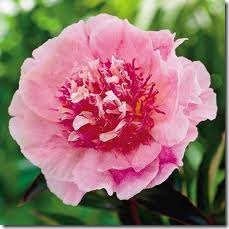 The large flowers and longevity of peonies may encourage their inclusion in myths from around the world. Even in the context of modern gardens, peonies have their own mystique, and the line between fact and fiction is sometimes blurred.
The large flowers and longevity of peonies may encourage their inclusion in myths from around the world. Even in the context of modern gardens, peonies have their own mystique, and the line between fact and fiction is sometimes blurred.
Greek Myths
-
Greek women ate peony seeds to relieve pain during childbirth.
Peony’s botanical name, Paeonia, derives from Paeon or Paean, a student of the legendary physician Asclepius. Paeon surpassed his teacher in skill and knowledge, driving the jealous mentor to kill him. Accounts vary, but one account has Zeus changing Paeon into a peony to save his life. A paean is also a hymn to the gods, a suitable term for the peony.
Chinese Myths
-
Written accounts of tree peonies in China date back to 581 A.D., gaining prominence during the Sui Dynasty. One myth has the feudal nation’s highest scholar dying rather than disobey the opposing commands of his Emperor and his parents. One year after the scholar’s death, a tree peony with enormous, blood-red flowers grew from his tomb. Another peony, Qing Long Wo Mo Chi, or Green Dragon Lying in an Ink Pool, arose when a tree peony goddess saved a tiny, kind dragon from danger. She hid with it in an ink pool, saving his life but forever changing her flower color to nearly black.
Peonies and Ants
-
 Ants and peonies do not have a symbiotic relationship.
Ants and peonies do not have a symbiotic relationship.Gardeners often labor under the tradition that peonies require ants to open the buds. Ants often do swarm over peony buds, drawn by the sweet sap. Buds open without the ant’s help, however, and they do not harm the burgeoning flower.

Deprecated: strpos(): Passing null to parameter #1 ($haystack) of type string is deprecated in /home/agriviek8Qv/agriviet.net/public_html/wp-includes/comment-template.php on line 2522